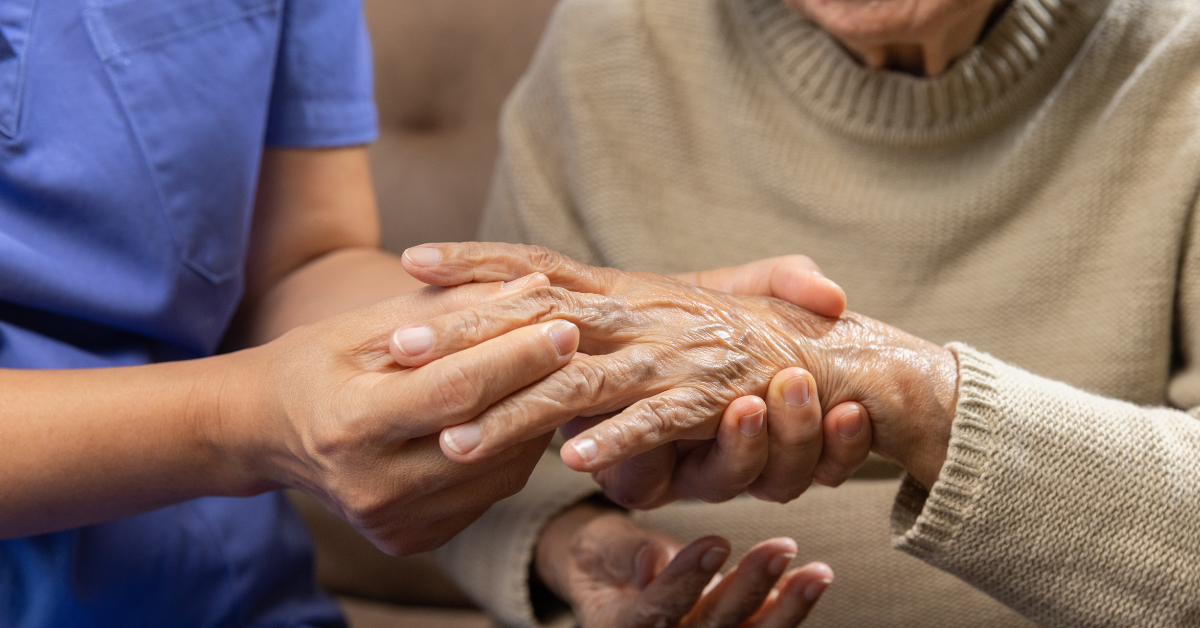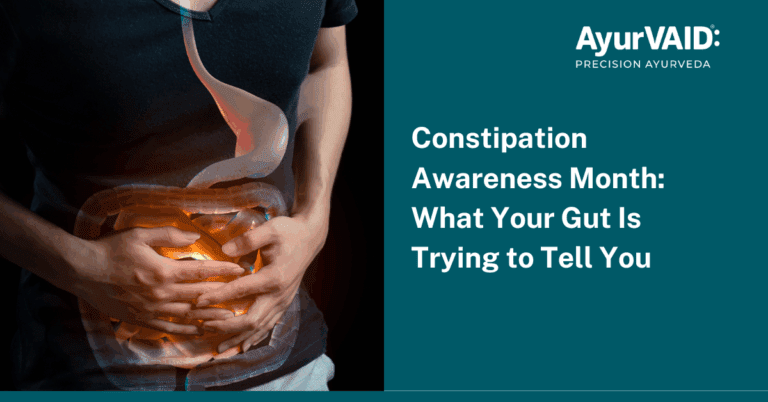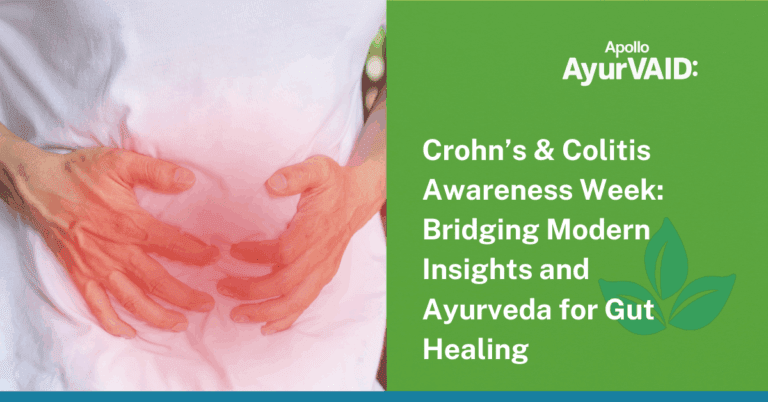Introduction
Rheumatoid Arthritis (RA) is a debilitating condition marked by inflammation, pain, and morning stiffness of the joints. The treatment approach aims at reducing inflammation, alleviating pain, and preventing disease progression. In this blog, we will explore a fewnatural remedies for rheumatoid arthritis pain relief and rheumatoid arthritis treatments in Ayurveda that are beneficial to preventing disease progression and improving quality of life.
Ayurveda - Rheumatoid Arthritis Cure
Rheumatoid Arthritis (RA) is considered Amavata in Ayurveda. Amavata is caused by the accumulation of ama (undigested metabolic toxins) and the aggravation of Vata Dosha, resulting in symptoms like joint pain, stiffness, swelling, and systemic involvement. In Ayurveda, Amavata is classified into different stages based on its severity and chronicity, which influence its curability.
In the case of Samanya Amavata (General or Mild Stage), where the disease process is milder and symptoms are not severe, and Navina Amavata (Acute or Recent Stage), where the disease has recently manifested and involvement of Ama and Vata is still localized, timely intervention with Ayurveda Panchakarma therapies, internal medicines along with dietary and lifestyle modification can effectively cure the condition.
In the case of the Severe Stage, where the disease progresses with more pronounced symptoms like joint pain, and deformities, and Chronic or Advanced Stage, where Ama has transformed and significant joint damage or systemic complications have developed, treatment will be employed to reduce symptoms and improve quality of life. Timely intervention, personalized treatment plans, and adherence to Ayurveda principles are crucial for achieving the best outcomes in Amavata care.

Rheumatoid Arthritis Treatment in Ayurveda
The treatment approach to RA mainly depends on the stage of the disease. As mentioned, the focus will be on reducing ama in the initial stage and balancing Vata dosha in later stages. The principles and treatments followed in each stage are as follows:
- Naveena Avastha (early stage) – The primary focus is alleviating pain and stiffness, correcting digestive imbalances, and preventing disease progression. The digestive system is targeted to eliminate toxin accumulation and restore proper metabolism. Purification of the body and metabolism improvement is done through Virechana (therapeutic purgation), while diet modifications include light, easily digestible foods. Mild external therapies, such as Ruksha Sweda (dry fomentation techniques) with the help of Churna Pinda Sweda, Valuka Sweda, or Salvana Upanaha are used to reduce inflammation and stiffness. Lifestyle recommendations include regular meal timings, adequate rest, light physical activity, and avoiding cold exposure and damp environments.
- Pravrudha Avastha ( progressive stage) – The treatment primarily focuses on controlling active inflammation and pain and preventing joint damage. This includes daily purification with Virechana, Vasti enema, managing pain by Janu Seka, Janu Basti, etc. modalities, joint protection, anti-inflammatory diet including ginger, cumin, etc. spices, moderate exercise within pain limits, and protected joint loading.
- Jeerna Avastha (chronic stage) -At this stage, the treatment focuses on preventing disease progression, alleviating chronic symptoms, and maintaining functional joint mobility. Treatment modalities include rejuvenation therapy, maintenance care, pain, functional improvement, and lifestyle advice.
Universal principles applicable across all stages include dietary and exercise guidelines, preventive strategies, environmental considerations, and modifications in treatment. The various targeted symptoms during advanced stages require a change in therapeutic approach where the focus shifts to preserving structure and improving functionality. The variations in treatment are made considering the patient’s tolerance, and health condition.
Natural Remedies for Rheumatoid Arthritis Pain Relief
While medical care remains crucial, numerous patients explore alternative natural solutions to improve function and quality of life. Combined with the mentioned treatment modalities, these natural remedies can help relieve pain and stiffness, potentially reducing reliance on pain medications. The following are a few of them
- Yoga poses like the Cat-Cow stretch, child’s pose, and seated forward bend improve flexibility, strength, and relaxation. These poses should be modified to accommodate individual limitations and practiced under the guidance of a qualified instructor.
- Dietary inclusions useful in preventing disease progression include barley, horse gram, foxtail millet, Kodo millet, red rice, drumstick, bitter gourd, pointed gourd, ginger, hot water, garlic processed in buttermilk, meat from animals living in deserts and dry lands, and water infused with Panchakola powder (a blend of spices like long pepper, ginger, and related herbs).
- Avoid curds, fish, jaggery, milk, black gram flour, paneer, cheese, etc heavy foods. Additionally, it is advised to avoid foods unsuitable for the individual, forcibly controlling natural urges and the habit of staying awake late at night.
- Using a warm pack on the painful area before bedtime and after waking up can be helpful.
- Consumption of Castor oil at bedtime ( 1 to 2 teaspoons) with warm water helps reduce inflammation and alleviates pain. Always consult your physician before starting this practice.
- Ginger tea, boiled from freshly grated ginger, can help reduce the inflammation in the body and alleviate pain.
- A paste of crushed garlic cloves with warm mustard oil can be applied gently to painful joints for natural pain management.
- Golden milk is prepared by adding turmeric powder to warm milk before bed, which has anti-inflammatory effects and enhances sleep.
- A therapeutic bath can be prepared by boiling carom seeds (ajwain) in warm water to ease aching joints and muscles.

Conclusion
Ayurveda spells a comprehensive approach to managing Rheumatoid Arthritis (Amavata) at various stages of the disease, starting from early intervention right up to chronic care management. The treatment includes the adoption of Panchakarma techniques supplemented by internal medicines, dietary alterations, and lifestyle modifications formulated for each stage of the disease from natural remedies that can be found in yoga poses, to simple interventions such as warm foments and castor oil, and anti-inflammatory foods, to medicines used in enhancing the relief of patients. Managing RA and successful prevention requires timely intervention with an individualized treatment plan aimed at root cause management while improving patient quality of life.
References
- Bodhisattwa Bakuli & P.B. Kar Mahapatra: A Literature Review On Amavata With Its Modern Co – Relation To Rheumatoid Arthritis. International Ayurvedic Medical Journal {online} 2022 {cited March 2022} Available from: http://www.iamj.in/posts/images/
upload/634_642.pdf - Khanna, S et al. (2017). Managing Rheumatoid Arthritis with Dietary Interventions. Frontiers in Nutrition, 4. https://doi.org/10.3389/fnut.2017.00052
- Abhinav, A (2015). Ayurvedic management of Rheumatoid arthritis: A case report. Journal of Ayurvedic and Herbal Medicine. https://doi.org/10.31254/jahm.2015.1202
- Sreenivas, V, Sujan, T K (2023). Effect of Sodhananga Achasnehapana Followed by Virechana in the Management of Rheumatoid Arthritis: A Case Report. International Journal of Ayurveda and Pharma Research. https://doi.org/10.47070/ijapr.
v11isuppl1.2673 - S, A et al. (2024). Proposal of a Personalized Panchakarma (bio-purificatory) treatment Algorithm for Amavata with special reference to Rheumatoid Arthritis. Annals of Ayurvedic Medicine. https://doi.org/10.5455/aam.159919






